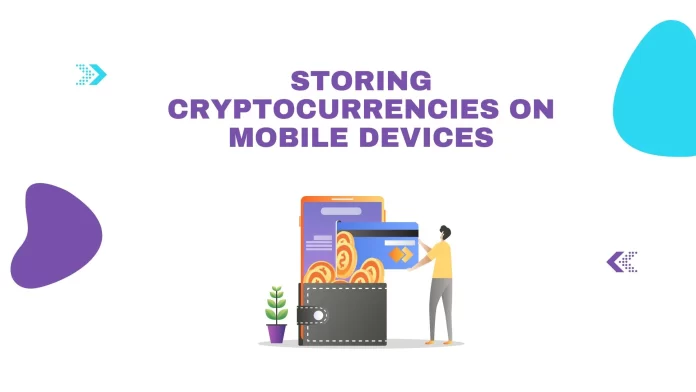Cryptocurrencies have offered alternative investment options for individuals looking to change their financial future. However, as they increasingly become adopted, the security of these digital assets becomes more vital. The use of mobile devices to access and manage cryptos has given users unmatched convenience. However, they present serious security risks, as they have become the number one target for cybercriminals looking to exploit various present vulnerabilities. That said, as you hope to complete your bitcoin transactions from your smartphones, prioritize the following best practices.
The foundation of crypto security lies in implementing robust measures to shield your digital coins from unauthorized access, theft, and other malicious activities. From using reputable wallets to enabling two-factor authentication and maintaining secure connections, each step outlined in this post is designed to empower you with the knowledge and tools needed to become a vigilant steward of your cryptocurrency.
1. Use Reputable Wallets
The importance of using reliable platforms doesn’t end after buying. You should also use reputable platforms to store your crypto coins. Unfortunately, most people only focus on finding reputable Bitcoin buy sites, ignoring the safety of their stored digital assets. Reputable platforms have a proven record of reliability and security in the crypto community.
Here are some top-tier wallets to consider, along with their key security features:
- Trezor – A leading hardware wallet known for its robust security measures, including support for two-factor authentication, passphrase protection, and secure element chips to safeguard your private keys.
- Ledger – Another trusted hardware wallet that provides military-grade security features, such as secure element chips, tamper-resistant designs, and Bluetooth connectivity for secure transactions.
- MetaMask – A popular software wallet that offers browser-based and mobile app options, with support for two-factor authentication, seed phrase backups, and integration with hardware wallets for enhanced security.
- Exodus – A user-friendly software wallet that prioritizes security with features like two-factor authentication, encrypted storage, and regular security updates to address potential vulnerabilities.
- Coinbase Wallet – A mobile-focused software wallet from the reputable Coinbase exchange, featuring biometric authentication, secure storage, and integration with the Coinbase platform for seamless management of your crypto assets.
The security of these wallets goes beyond just a good reputation. Reputable wallet providers consistently deliver timely updates and security patches to address potential vulnerabilities, proactively identifying and resolving weaknesses to protect their users’ funds.
Additionally, these wallets are designed with multiple security features, such as two-factor authentication, passphrase protection, and biometric authentication, to limit unauthorized access and safeguard your digital assets. Developers of these platforms also emphasize user education, ensuring that their customers are empowered to take the necessary steps to secure their crypto holdings.
Besides a good reputation, reputable wallets provide timely updates and security patches to mitigate potential vulnerabilities. Developers or those running the platform proactively identify and address weaknesses and release updates that have the latest security features. Keeping your wallet updated reduces the risk of exposure.
Reputable wallets should also have plenty of security features designed to protect your digital assets. This often includes two-factor authentication, passphrase protection, or biometric authentication that limits unauthorized access. Developers of these platforms should also prioritize the provision of user education to help users safeguard their funds.
2. Enable Two-Factor Authentication
Activating two-factor authentication provides extra protection to your crypto wallet. With two-factor authentication enabled, you’ll need a password and another confirmatory step to access your accounts. You can implement the two-factor authentication through:
- SMS or text message: With this method, the wallet sends you a verification text to confirm your access request. You should enter the code to complete the authentication process. Though widely supported, hackers can compromise the authentication by swapping your SIM cards.
- Authenticator apps: These apps generate one-time pins that expire after a few minutes. One of the most popular app is Google Authenticator. These OTPS are used as the second authentication, making them safer than text messages.
- Hardware tokens: Some wallets allow users to use hardware tokens. These physical devices generate OTPs used to authenticate your access.
Enabling two-factor authentication in your mobile wallet requires that you link your account to either of these three methods. Once enabled, you should provide the additional information every time you want to access your account or complete transactions.
3. Use Secure Connections
Using secure connections is also important anytime you are accessing your mobile wallet. Secure connections help protect wallet credentials, transaction details, and other sensitive information from interception or unauthorized access by malicious persons. That said, this mostly depends on the connections used to access the internet.
Most people use a mobile data connection for their smartphones, which is highly considered safer than Wi-Fi networks. Cellular networks are less susceptible to snooping and interceptions. Those who rely on Wi-Fi should only access their wallets when connected to trusted networks. Avoid open or unsecured Wi-Fi networks as they are prone to interceptions. Similarly, you should consider using a VPN when accessing your wallets. VPNs encrypt your internet traffic, protecting your sensitive information from malicious persons.
Endnote
With the popularity of cryptos increasing soaring, mobile devices have become important tools for managing these digital assets. However, crypto owners should be wary of the serious risks that come with accessing their digital wallets using mobile phones. While they offer unmatched convenience, they are prone to various vulnerabilities. Recognizing these threats and taking proactive measures to prevent them is important.
